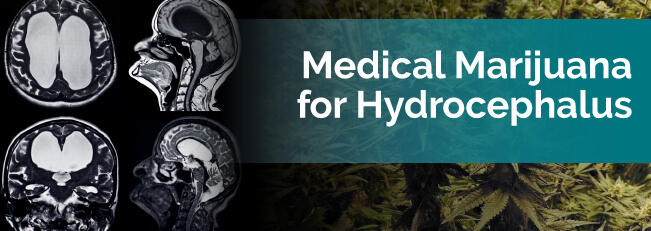
Once inaccurately known as “water on the brain,” hydrocephalus is a relatively rare condition involving the buildup of fluid in brain cavities. The excess fluid in the brain creates pressure, which can cause long-lasting damage. Traditional treatment for the condition usually requires surgery. Additional treatments may be needed to manage the effects of the condition.
Doctors have been aware of and studying hydrocephalus for almost as long as Western medicine has existed. Hippocrates, also known as the “father of modern medicine,” may have documented the first treatment of the condition, by puncturing the skull to drain the area.
References to hydrocephalus are also in the works of another ancient doctor, Galen. Galen and Hippocrates differed in their belief concerning the origin of the condition. While Hippocrates thought the ventricles in the brain were enlarged, Galen attributed the condition to an accumulation of cerebrospinal fluid.
Galen was a doctor of his time and was working under the belief that the human soul was contained somewhere in the structure of the brain. The fluid was supposedly waste that resulted from a purification process, and was thought to have some sort of spiritual value.
The belief that the cerebrospinal fluid was some sort of “spiritus animalis” and not, in fact, a bodily fluid, continued well into the 16th century. It wasn’t until the later part of the 17th century that a doctor, Thomas Willis, suggested that a part of the brain, the choroid plexuses, were responsible for producing the fluid, instead of some sort of spiritual process.
It would take a few hundred more years before doctors had a better understanding of hydrocephalus. In the 18th century, Robert Whytt was the first to call the condition a disease. Later on, in the 19th century, doctors were able to distinguish different forms of the disease, including congenital, acquired, chronic and acute.
Even as doctors began to understand the disease better, the treatments available weren’t particularly useful. Some doctors prescribed diuretics or purgatives. Others injected iodine, performed bloodletting, head wrapping or trephination of the skull, which involves drilling into the bone.
As the medical community developed a better understanding of the brain and its structures, understanding of hydrocephalus improved immensely. In the 20th century, two doctors, Eugene Spitz and Frank Nulsen, introduced the process of placing a shunt to reduce pressure in the ventricles.
The symptoms of normal pressure hydrocephalus usually get worse over time if the condition is not treated, although some people may experience temporary improvements. While the success of treatment with shunts varies from person to person, some people recover almost completely after treatment and have a good quality of life. Medical marijuana is one of the most beneficial forms of therapy for this condition.
Medical marijuana for symptom relief of hydrocephalus may be helpful in relieving symptoms associated with this condition, such as sleep apnea, chronic seizures, manic attacks or bipolar outbursts, chronic or debilitating pain, frequent headaches and severe or debilitating nausea.
While surgery often helps to ease the pressure created by the buildup of cerebrospinal fluid in the brain, it often doesn’t tackle the long-lasting effects of hydrocephalus. Using marijuana might be able to alleviate many of those long-term effects.
Find A Doctor Find A Dispensary

For example, there have been some studies examining the effect of cannabinoids on the management of seizures. While these studies have looked specifically at people with epilepsy, there is some suggestion that cannabinoids could be beneficial for the treatment of seizures in people with hydrocephalus.
Both cannabinoids (CBD) and tetrahydrocannabinol (THC) have been shown to have some sort of anticonvulsant effect in patients. THC usually also produces some adverse effects, particularly when given to children who experience seizures, so it is more common for a patient to use CBD to control convulsions.
Clinical trials and studies of the use of CBD to reduce or control seizures have been few, due to the current rules about medical marijuana. So far, just four studies have met the guidelines when it comes to randomized controlled trials. Outside of those trials, there is ample anecdotal evidence suggesting that CBD is an effective way to reduce and control seizures.
One study examining the effectiveness of CBD for controlling seizures involved a young girl named Charlotte. She had a very severe form of epilepsy and would have around 300 seizures per week by the time she was five years old. At three months old, she was diagnosed with Dravet syndrome, a form of epilepsy known for causing frequent and incredibly long-lasting seizures. Some of Charlotte’s seizures would last for hours.
In 2012, Charlotte became the youngest patient in Colorado to be approved to use medical marijuana. She used a strain of cannabis placed under her tongue that contained a low level of THC and a high level of CBD. For the next seven days, she was seizure-free.
As a result of the study, growers developed a special strain of cannabis, called Charlotte’s Web. By 2014, Charlotte experienced just two or three seizures each month, from around 50 per day.
Along with helping reduce seizures, medical cannabis for hydrocephalus might also help alleviate symptoms including pain and nausea or vomiting. Both THC and CBD have been shown to activate cannabinoid receptor 1, which can help improve feelings of nausea and stop a person from vomiting. Both CBD and THC can also help lower pain levels in patients.
Currently, medical marijuana for hydrocephalus is approved in only a few states, including Illinois. States that don’t specifically mention hydrocephalus in their medical marijuana law often explicitly allow cannabis for the symptoms associated with the disease, including vomiting and nausea, ongoing pain or seizures.
Speaking to a marijuana doctor in your state about the specific requirements can help you better understand the rules and requirements for using medical cannabis for hydrocephalus. To find a marijuana doctor in your state or a dispensary, search our database today.
Find A Doctor Find A Dispensary
Hydrocephalus can be divided into several categories. One group refers to when the disease develops. Congenital hydrocephalus is present when a person is born. It’s often connected to a genetic issue or develops because of a problem with fetal development. Babies with congenital hydrocephalus usually have huge heads.
Interestingly enough, there are sometimes cases of congenital hydrocephalus where a person doesn’t have symptoms as a baby or child, but develops signs of the condition during adulthood.
Acquired hydrocephalus develops after birth and can occur during childhood or adulthood. The disease can be due to an injury to the head, a stroke, a tumor or some other causes.
Hydrocephalus ex-vacuo is another form of hydrocephalus. It’s different from other types because it often causes the brain to shrink somewhat. Usually, this type of the disease occurs after a stroke or is connected to types of dementia that cause brain damage.
Along with being either acquired or congenital, hydrocephalus can other be categorized as either communicating or non-communicating. Non-communicating hydrocephalus is also known as obstructive hydrocephalus, as the cerebrospinal fluid is unable to flow along the passages that connect the ventricles in the brain. In many cases, the narrowing of the passages occurs in the aqueduct of Sylvius, which connects the third and fourth ventricles in the brain. When that narrowing occurs, it’s called aqueductal stenosis.
If a person has communicating hydrocephalus, the cerebrospinal fluid becomes blocked once it leaves the ventricles. Since the ventricles themselves aren’t shut or closed off, it’s still possible for them to “communicate” with each other.
One of the more common forms of communicating hydrocephalus is normal pressure hydrocephalus. It most often develops in older people and usually is the result of a tumor, stroke or surgical complications. About 375,000 older people in the U.S. have this form of the disease. The real numbers may be higher, as the condition is often misdiagnosed or not diagnosed at all.

Although hydrocephalus is a relatively rare condition, it is more common than certain other congenital diseases or conditions. The Hydrocephalus Association estimates that between one and two babies out of every 1,000 born have the disease, making it about as common as Down syndrome. It’s considerably more common than brain tumors or spinal bifida. Among children who aren’t born with the condition, about 6,000 per year develop it before the age of two.
About 75,000 people are discharged from hospitals each year with a diagnosis of hydrocephalus. The condition can’t be cured, and there are no medical therapies to help with it. The main option for treatment is surgery, and about 40,000 are performed annually. Many people with hydrocephalus need multiple surgeries, and at any time, only about 30 percent of surgical patients are going in for their first procedure.

Hydrocephalus is very often misdiagnosed or not diagnosed at all. The Hydrocephalus Associationestimates that up to 15 percent of older people diagnosed with dementia might actually have normal pressure hydrocephalus, which can be treated. The association estimates correctly diagnosing hydrocephalus instead of giving a patient a diagnosis of dementia would save the health care system and patients $184 million over the course of five years.
The condition is not only misdiagnosed in the older population. It’s also often not even considered as an option in younger patients.
Although doctors often miss the condition, diagnosing it isn’t terribly difficult. Beyond a basic physical exam, diagnosing hydrocephalus involves imaging and a neurological exam. As part of the neurological exam, a doctor might look at the following:
A doctor will most likely also perform some type of imaging, such as an MRI, ultrasound or CT scan, to get a good look at the brain. The imaging will allow a doctor to see if the ventricles are enlarged due to a buildup of fluid. The type of imaging used largely depends on the patient and the situation. CT scans are often reserved for emergency cases only, while ultrasound is most commonly used on infants.
The symptoms of hydrocephalus vary based on whether the condition is acquired or congenital and based on the age of the person when it occurs.
In infants, signs of congenital hydrocephalus include:
In children and toddlers, the signs of acquired hydrocephalus include:
In older adults, symptoms of acquired hydrocephalus can also include:
Doctors don’t prescribe medications to manage or control the symptoms of hydrocephalus. The only current treatment from the medical community is surgery.

Usually, one of two types of surgery is performed to reduce the symptoms caused by the disease and to improve a patient’s overall quality of life. The most commonly performed procedure involves placing a shunt, or a small plastic tube, into the brain to redirect the flow of cerebrospinal fluid.
Typically, a shunt system contains three parts. There’s the shunt itself, as well as a valve and reservoir. The valve controls the rate of flow of the fluid through the shunt, while the reservoir collects the fluid before it is drained. Usually, the tubing of the shunt is placed in one of the affected ventricles, then leads to a different area of the body.
People who receive shunts to treat hydrocephalus usually need to have the shunts for the rest of their lives. The devices need regular monitoring and may need to be repaired or replaced from time to time, which is why patients with the condition undergo so many surgeries.
Like all surgeries, placing a shunt isn’t without its risks. One of the biggest risks is for shunt malfunction or failure. The catheter or plastic tube can break or disconnect from the valve, the shunt can become blocked or the valve might not release fluid with the right pressure. In some cases, a shunt can lead to infection or can irritate the skin it is placed underneath.
Usually, the signs that a shunt is malfunctioning or not working are clearly visible. They include:
While a shunt is the most common surgical treatment for hydrocephalus, it’s not the only option. A less commonly performed option is a surgery known as an endoscopic third ventriculostomy. The surgery involves drilling a hole in the skull, threading a small camera into the hole, then making an opening on the bottom of the third ventricle. The opening allows the cerebrospinal fluid to flow freely, reducing pressure.
Risks of a third ventriculostomy include having the opening close up, infection and bleeding. Signs of a problem with the procedure are often the same as the signs of a shunt malfunction.
Usually, a third ventriculostomy is reserved for older patients. It’s often not successful in infants, so a doctor will typically advise waiting until a patient is at least two years old.